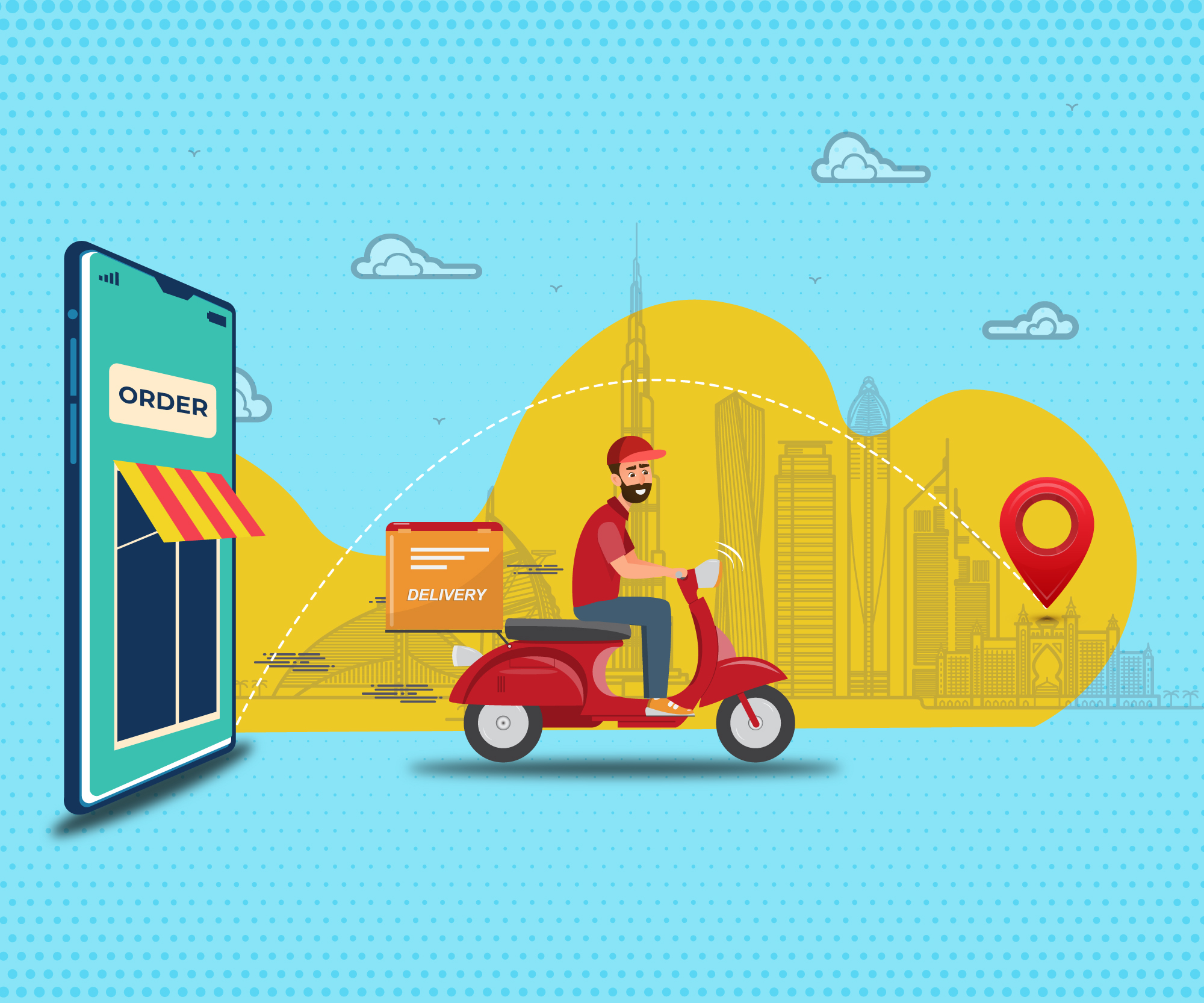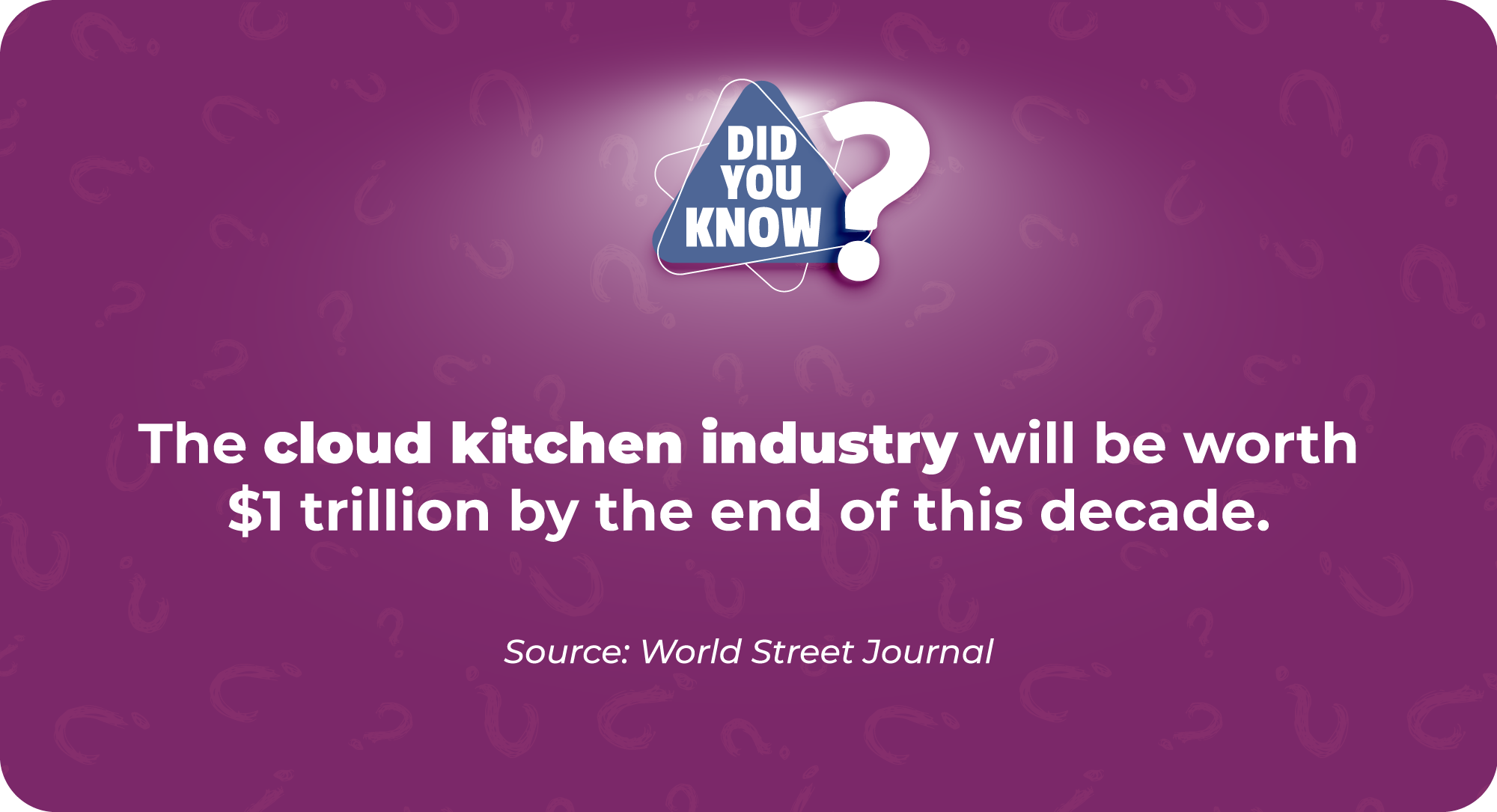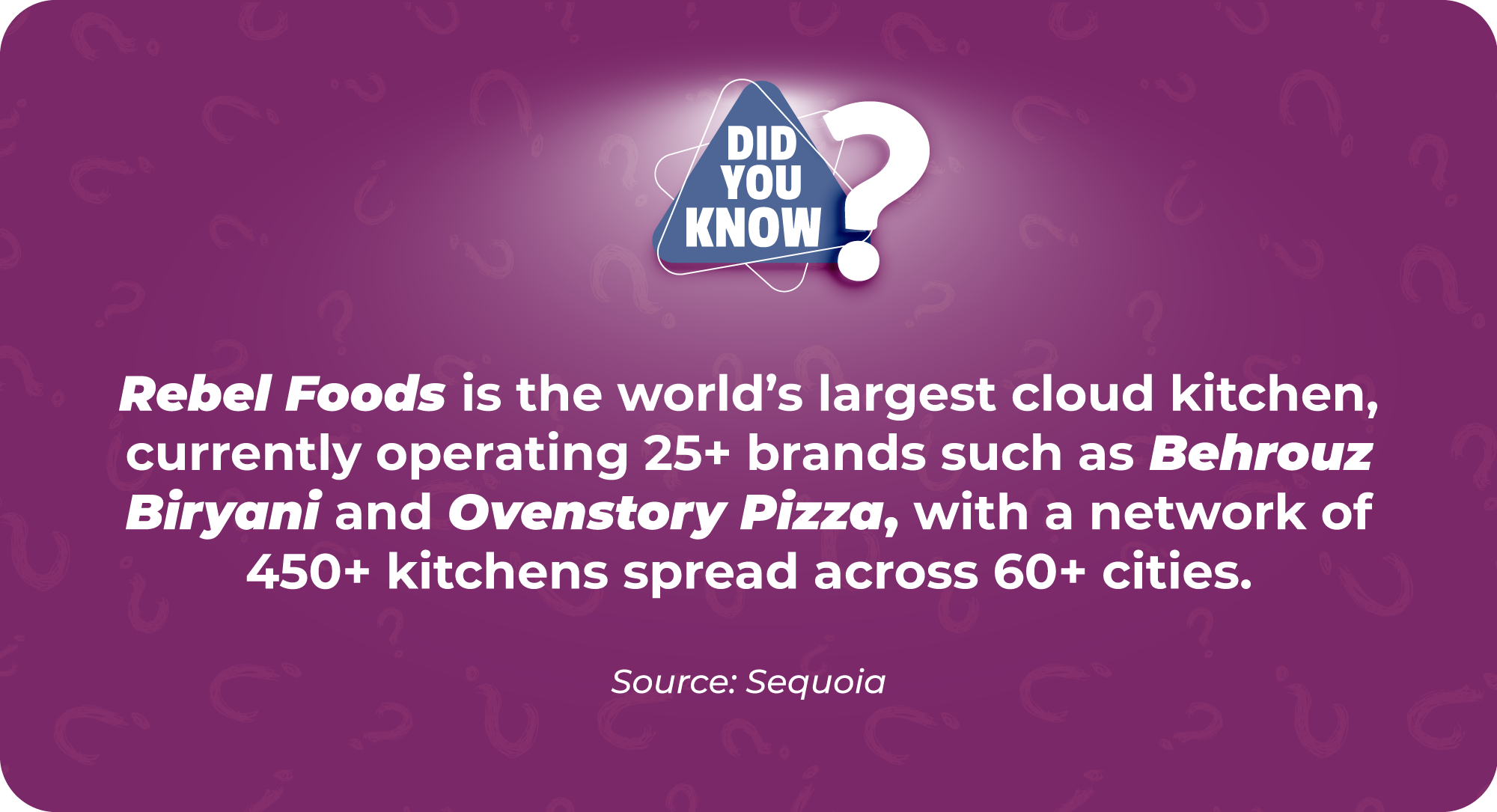
You must’ve heard about cloud storage—a virtual space to store your data and extract it whenever required. A similar concept is picking up steam in the food industry, known as cloud kitchens. Cloud kitchen, in simple words, is a commercial kitchen setup that only focuses on producing food specifically for doorstep delivery. In many parts of the world, the meaning of this phrase is still foggy, and it is not a mainstream reference for everyday customers.
‘Virtual kitchen’, ‘dark kitchen’, ‘ghost kitchen’, and ‘cloud kitchen’ are all synonyms. But, while these terms may sound new, the basic idea of a delivery-based kitchen probably feels familiar. Dominos, in a way, was delivering pizzas using ghost kitchens 30 years ago. But today’s cloud kitchens have a new third-party delivery system known as an aggregator. And thanks to technological advancements, it has become easier to operate a cloud kitchen facility, so any restaurant can now deliver its food to customers.
The business model of cloud kitchens
The pandemic changed the course of our lives drastically. Along with human lives, the nature and dynamics of industries also changed acutely. As a result, the food economy’s overall landscape altered as well. People could not go out to restaurants as often as they liked, and they wanted everything delivered to their doorsteps. Restaurateurs had no choice but to adapt to these changes.
From a business standpoint, there are two variations of the cloud kitchen business model. You can be either a real-estate player, where you provide spaces to companies to build their kitchens or a restaurant owner running multiple kitchens under one brand name. Fundamentally, cloud kitchens operate on a delivery-only model. And for delivery, they rely on aggregators like Zomato, Swiggy, and Uber Eats.
Furthermore, the running of a cloud kitchen has multiple variations. You can be an independent cloud kitchen owner—a restaurant without a dine-in facility. You can also work as a hybrid kitchen owner with a dine-in and delivery facility. Apart from this, you can have a fully outsourced cloud kitchen, where food preparation takes place outside, and your chefs give a finishing touch to the dishes in the facility.
The phenomenon of home baking and home chefs also arose during the pandemic. These individuals have brought to life the idea of ‘niching down’. It’s no longer a broad category of cuisine. Why choose north Indian cuisine when you could have authentic Punjabi or Bihari dishes? And people love something that stands out. Therefore, merging the home chef and the cloud kitchen model holds enormous growth potential.
Every home kitchen has the potential to become a cloud kitchen.

Why are cloud kitchens so successful?
The unexpected rise of cloud kitchens is in response to the explosion in demand for food delivery during the pandemic. Here are some of the reasons why they have been thriving:
- Low investment: One of the significant benefits of running a cloud business is that you dodge much of the operating cost. Running a traditional restaurant setup isn’t easy. You must bear property taxes, maintenance charges, employee payroll, and other miscellaneous expenses. However, restaurants that operate with cloud kitchens only need a few chefs, and they may share the cost of kitchen space with other restaurants, depending on the service.
- Ease in scaling operations: Since the investment required to open a cloud kitchen is comparatively lesser, it is possible to launch more cloud operations simultaneously. Multiple brands operating under one roof will further help restaurants expand beyond their geographical locations. You can be anywhere in the world—if the internet can reach you, cloud kitchens will, too.
- Ease in experimentation: Email marketers are known for doing A/B testing, sending two email variations to customers to determine which one has the highest open rate. Similarly, the scope of experimentation with food items and restaurant menus is much wider in cloud kitchens than in traditional restaurants. All you have to do is make changes to your recipe and menu. If it works, keep it. If not, strike it out. You are free from the hassle of printing a menu for your restaurant.
Top cloud kitchens winning the game

- Kitopi is one of the world’s leading, state-of-the-art cloud kitchen platforms, with over 1000 employees in UAE, KSA, and Kuwait. It operates over 60 cloud kitchens across five countries and is constantly scaling up. Currently, they provide around 3000 orders per day with the mission statement ‘satisfying the world’s appetite’.
- Next on the list is Zuul. It’s a US-based platform offering products and services to people in the food business. Like co-working spaces, they provide shared spaces in their ghost kitchen facilities. They also offer strategic consulting services to new players in the food-delivery sphere.
- Reef Technologies is another US-based company allowing restaurants to rent kitchen space in their extensive multi-unit facilities. Their delivery kitchens are strategically placed in lively neighbourhoods, enabling faster delivery of food items.
- A new cloud kitchen that’s changing the coffee game in India is none other than SLAY Coffee. The brand currently operates with more than 150 cloud kitchens across the country. It is setting trends for the upcoming cloud startups in the country.
Challenges of cloud kitchen
Realistically speaking, it’s hard for single cloud kitchen owners to survive in this industry because of high aggregator commissions. But, unfortunately, these are hidden costs that every cloud kitchen owner faces. Aggregators sell your services under their brand name and charge 20-30 per cent.
Another problem cloud kitchens face is the complexity of cooking multiple different items in one kitchen quickly. Preparing, packing, and delivering them on time is sometimes a challenge for cloud kitchen owners.
Furthermore, managing the delivery aspect of things is a challenge in itself. Since the success of the cloud kitchen also depends on quick and prompt deliveries, managing delivery personnel is essential. So now it’s not just about being a cloud kitchen but a smart cloud kitchen.
For the broader restaurant industry, what’s interesting about ghost kitchens is the investment in the space. These kitchens have redefined the idea of what a kitchen could be. We can’t be sure what the next step is, but we are confident that ghost kitchens are not just a fad that emerged due to the pandemic. Instead, it’s built on the foundations of the food supply chain and will continue to persist.




